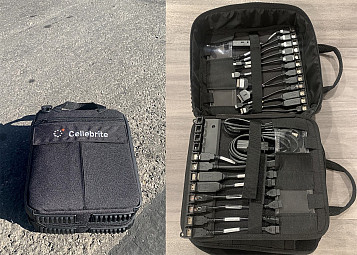Cellebrite makes software to automate physically extracting and indexing data from mobile devices. They exist within the grey – where enterprise branding joins together with the larcenous to be called “digital intelligence.” Their customer list has included authoritarian regimes in Belarus, Russia, Venezuela, and China; death squads in Bangladesh; military juntas in Myanmar; and those seeking to abuse and oppress in Turkey, UAE, and elsewhere. A few months ago, they announced that they added Signal support to their software.
Their products have often been linked to the persecution of imprisoned journalists and activists around the world, but less has been written about what their software actually does or how it works. Let’s take a closer look. In particular, their software is often associated with bypassing security, so let’s take some time to examine the security of their own software.
The background
First off, anything involving Cellebrite starts with someone else physically holding your device in their hands. Cellebrite does not do any kind of data interception or remote surveillance. They produce two primary pieces of software (both for Windows): UFED and Physical Analyzer.
UFED creates a backup of your device onto the Windows machine running UFED (it is essentially a frontend to adb backup on Android and iTunes backup on iPhone, with some additional parsing). Once a backup has been created, Physical Analyzer then parses the files from the backup in order to display the data in browsable form.
When Cellebrite announced that they added Signal support to their software, all it really meant was that they had added support to Physical Analyzer for the file formats used by Signal. This enables Physical Analyzer to display the Signal data that was extracted from an unlocked device in the Cellebrite user’s physical possession.
One way to think about Cellebrite’s products is that if someone is physically holding your unlocked device in their hands, they could open whatever apps they would like and take screenshots of everything in them to save and go over later. Cellebrite essentially automates that process for someone holding your device in their hands.
The rite place at the Celleb…rite time
By a truly unbelievable coincidence, I was recently out for a walk when I saw a small package fall off a truck ahead of me. As I got closer, the dull enterprise typeface slowly came into focus: Cellebrite. Inside, we found the latest versions of the Cellebrite software, a hardware dongle designed to prevent piracy (tells you something about their customers I guess!), and a bizarrely large number of cable adapters.
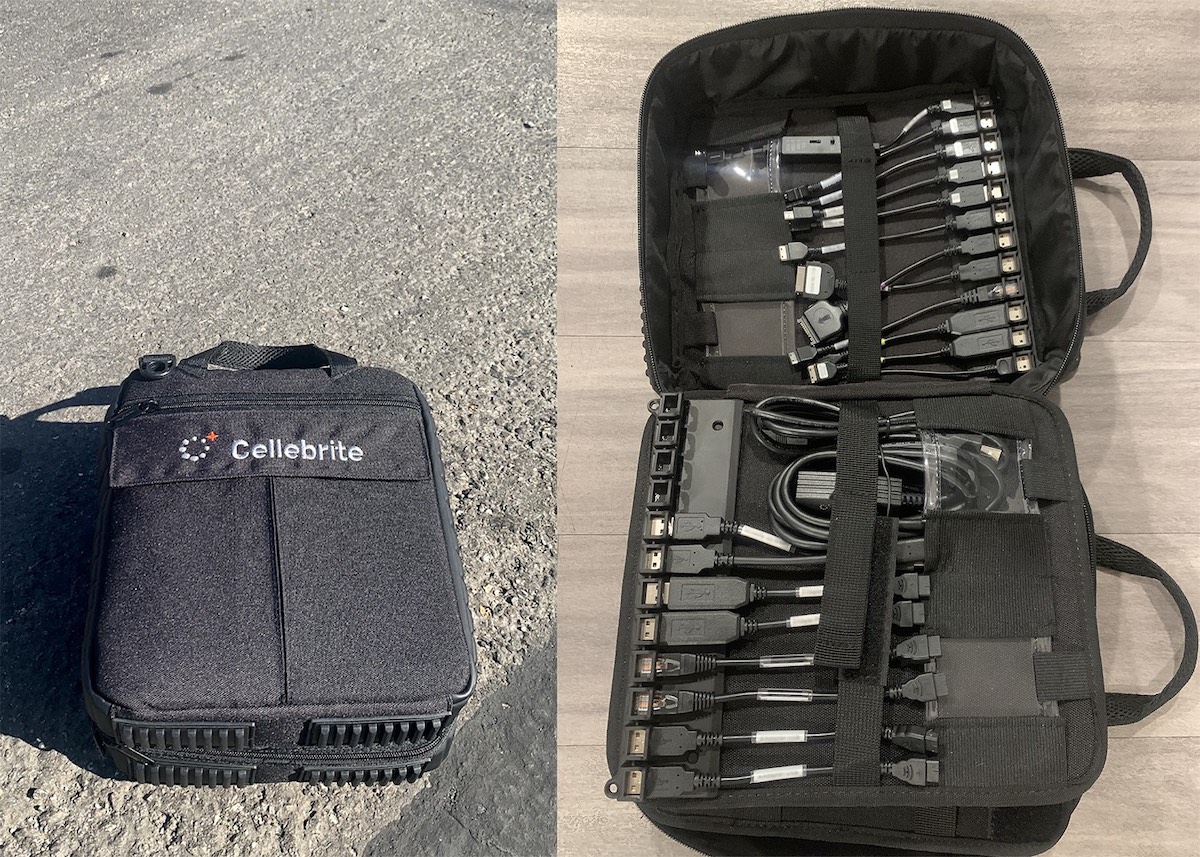
The software
Anyone familiar with software security will immediately recognize that the primary task of Cellebrite’s software is to parse “untrusted” data from a wide variety of formats as used by many different apps. That is to say, the data Cellebrite’s software needs to extract and display is ultimately generated and controlled by the apps on the device, not a “trusted” source, so Cellebrite can’t make any assumptions about the “correctness” of the formatted data it is receiving. This is the space in which virtually all security vulnerabilities originate.
Since almost all of Cellebrite’s code exists to parse untrusted input that could be formatted in an unexpected way to exploit memory corruption or other vulnerabilities in the parsing software, one might expect Cellebrite to have been extremely cautious. Looking at both UFED and Physical Analyzer, though, we were surprised to find that very little care seems to have been given to Cellebrite’s own software security. Industry-standard exploit mitigation defenses are missing, and many opportunities for exploitation are present.
As just one example (unrelated to what follows), their software bundles FFmpeg DLLs that were built in 2012 and have not been updated since then. There have been over a hundred security updates in that time, none of which have been applied.
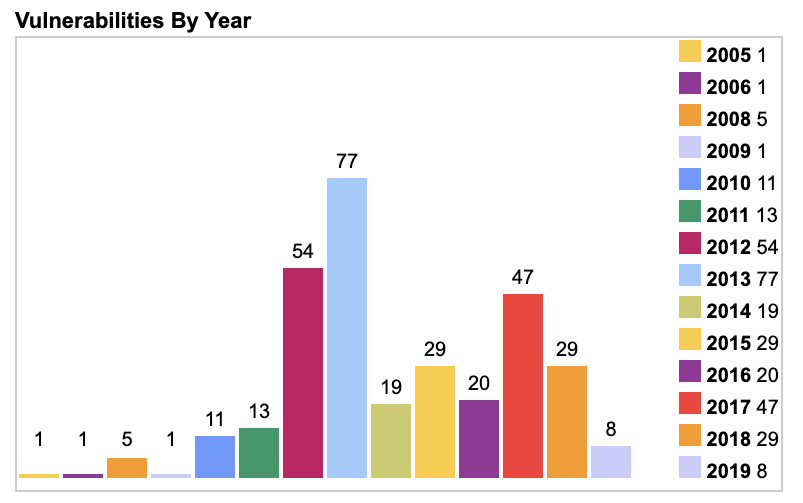
The exploits
Given the number of opportunities present, we found that it’s possible to execute arbitrary code on a Cellebrite machine simply by including a specially formatted but otherwise innocuous file in any app on a device that is subsequently plugged into Cellebrite and scanned. There are virtually no limits on the code that can be executed.
For example, by including a specially formatted but otherwise innocuous file in an app on a device that is then scanned by Cellebrite, it’s possible to execute code that modifies not just the Cellebrite report being created in that scan, but also all previous and future generated Cellebrite reports from all previously scanned devices and all future scanned devices in any arbitrary way (inserting or removing text, email, photos, contacts, files, or any other data), with no detectable timestamp changes or checksum failures. This could even be done at random, and would seriously call the data integrity of Cellebrite’s reports into question.
Any app could contain such a file, and until Cellebrite is able to accurately repair all vulnerabilities in its software with extremely high confidence, the only remedy a Cellebrite user has is to not scan devices. Cellebrite could reduce the risk to their users by updating their software to stop scanning apps it considers high risk for these types of data integrity problems, but even that is no guarantee.
We are of course willing to responsibly disclose the specific vulnerabilities we know about to Cellebrite if they do the same for all the vulnerabilities they use in their physical extraction and other services to their respective vendors, now and in the future.
Below is a sample video of an exploit for UFED (similar exploits exist for Physical Analyzer). In the video, UFED hits a file that executes arbitrary code on the Cellebrite machine. This exploit payload uses the MessageBox Windows API to display a dialog with a message in it. This is for demonstration purposes; it’s possible to execute any code, and a real exploit payload would likely seek to undetectably alter previous reports, compromise the integrity of future reports (perhaps at random!), or exfiltrate data from the Cellebrite machine.
The copyright
Also of interest, the installer for Physical Analyzer contains two bundled MSI installer packages named AppleApplicationsSupport64.msi and AppleMobileDeviceSupport6464.msi. These two MSI packages are digitally signed by Apple and appear to have been extracted from the Windows installer for iTunes version 12.9.0.167.
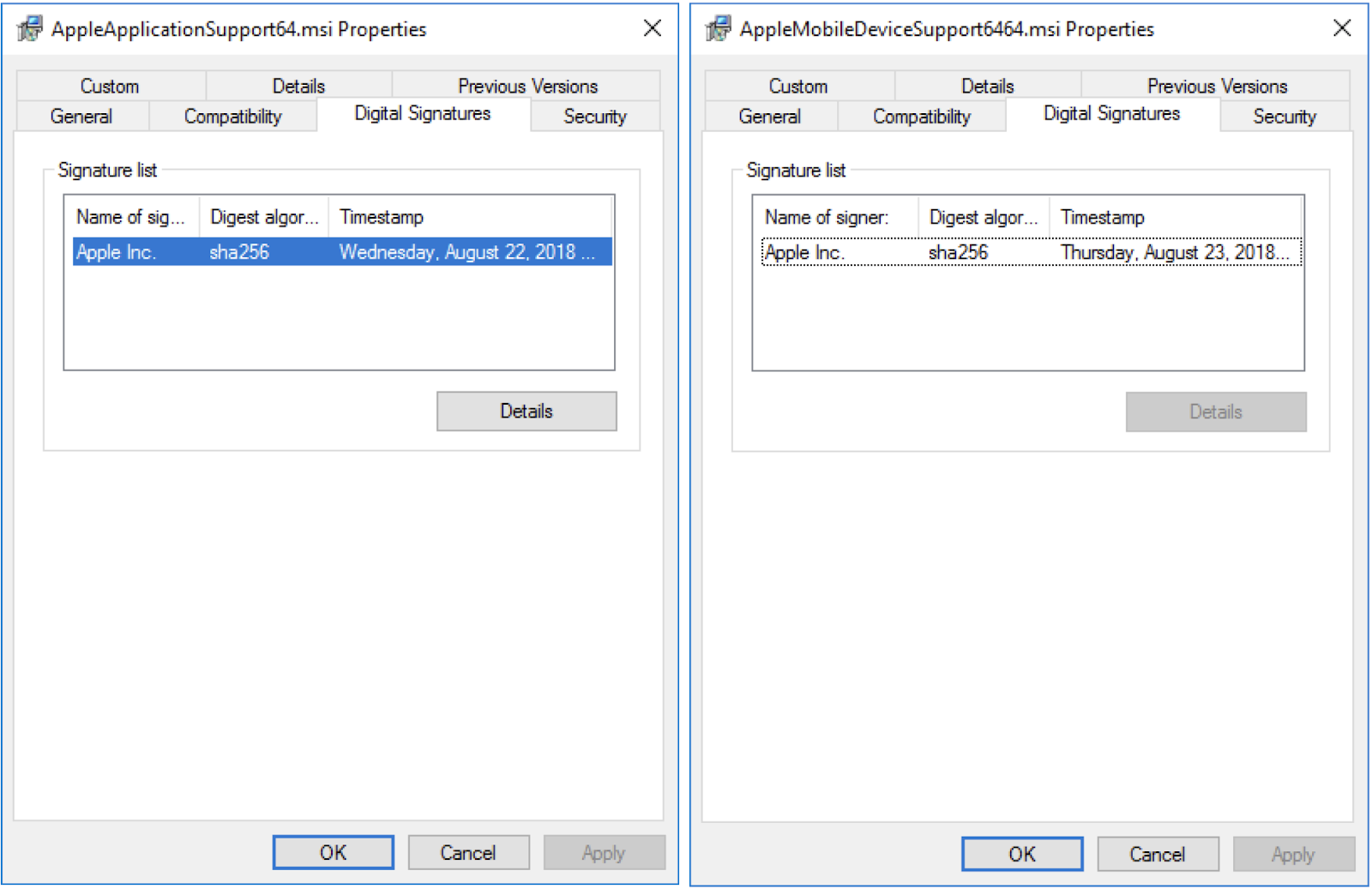
The Physical Analyzer setup program installs these MSI packages in C:\Program Files\Common Files\Apple. They contain DLLs implementing functionality that iTunes uses to interact with iOS devices.
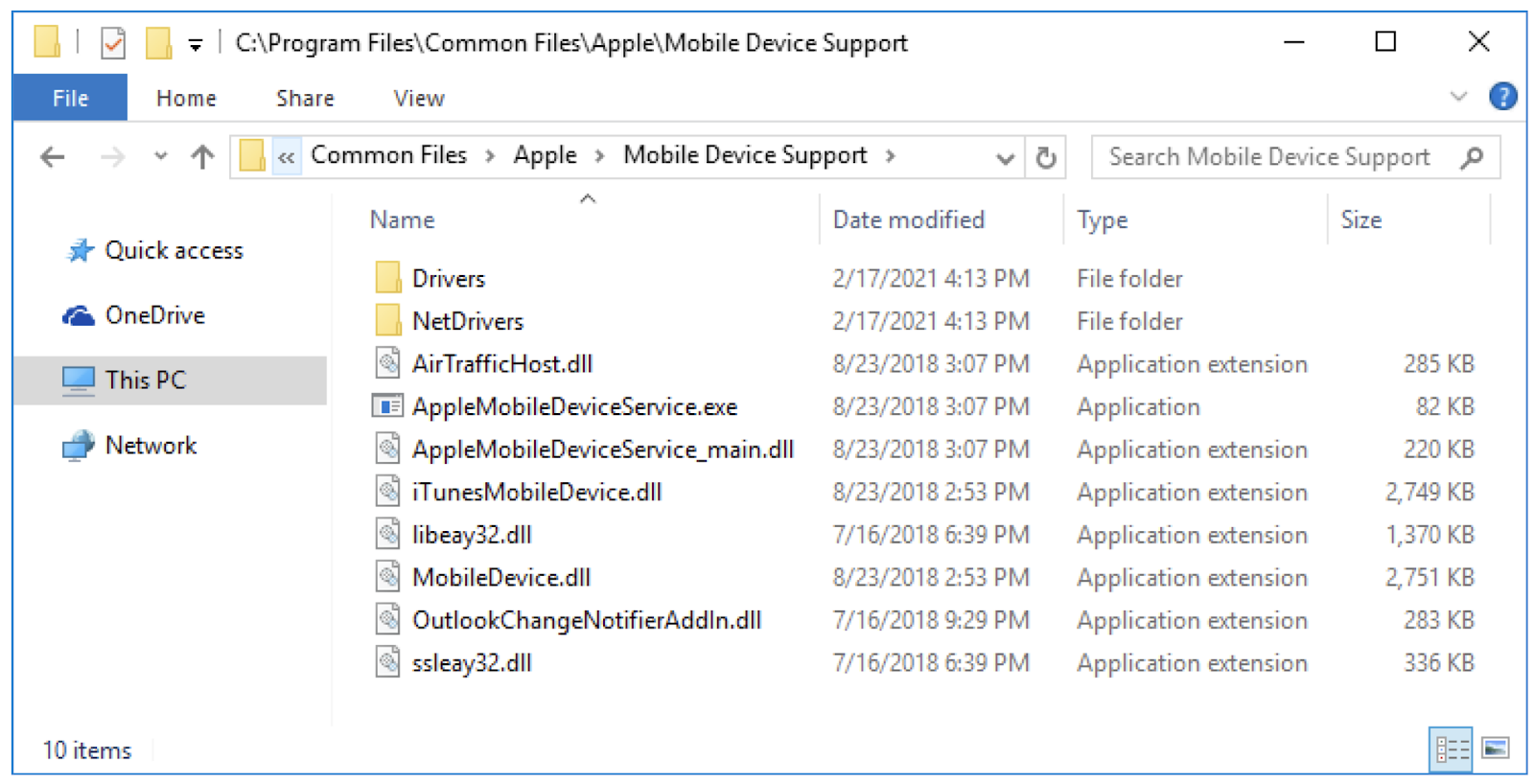
The Cellebrite iOS Advanced Logical tool loads these Apple DLLs and uses their functionality to extract data from iOS mobile devices. The screenshot below shows that the Apple DLLs are loaded in the UFED iPhone Logical.exe process, which is the process name of the iOS Advanced Logical tool.
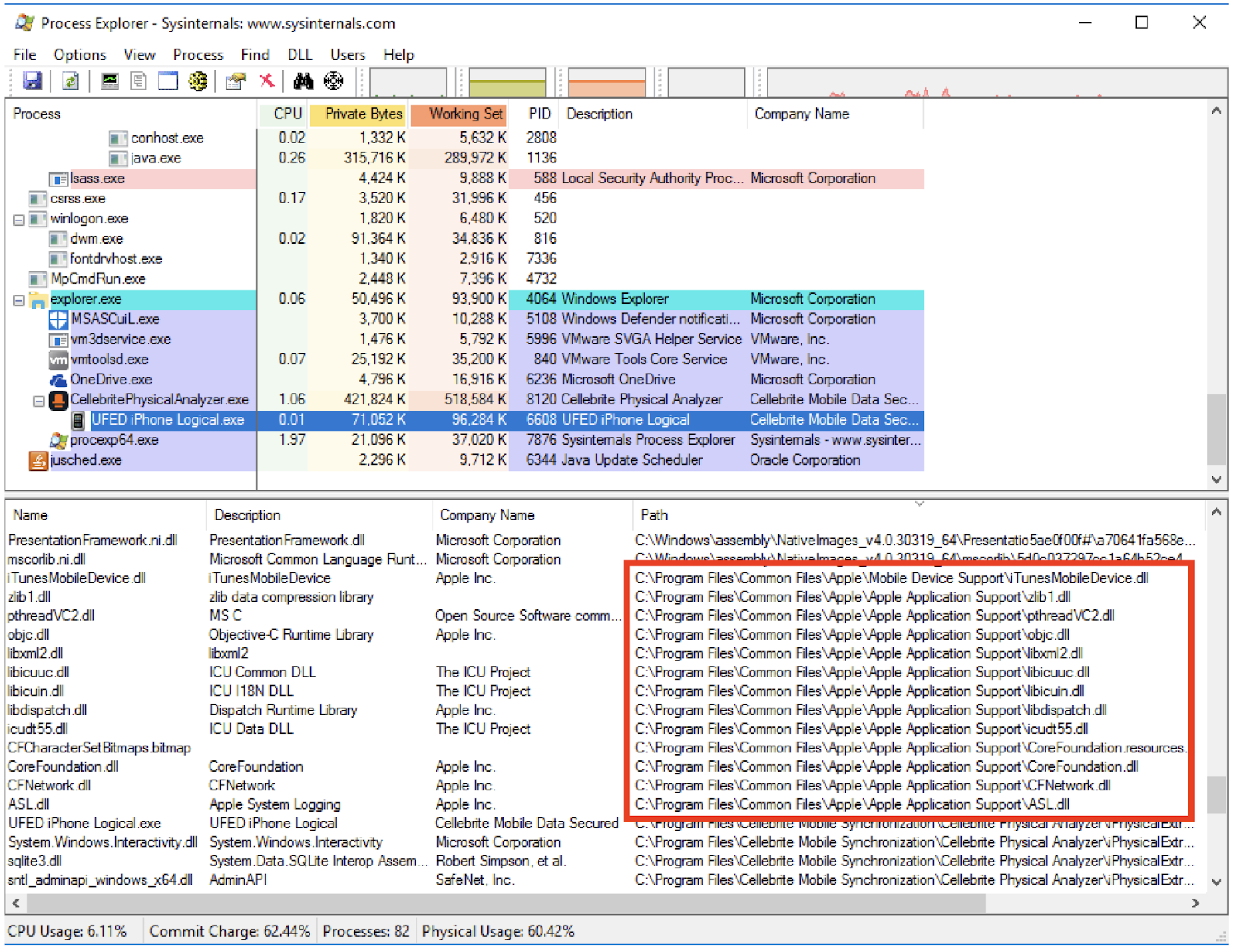
It seems unlikely to us that Apple has granted Cellebrite a license to redistribute and incorporate Apple DLLs in its own product, so this might present a legal risk for Cellebrite and its users.
The completely unrelated
In completely unrelated news, upcoming versions of Signal will be periodically fetching files to place in app storage. These files are never used for anything inside Signal and never interact with Signal software or data, but they look nice, and aesthetics are important in software. Files will only be returned for accounts that have been active installs for some time already, and only probabilistically in low percentages based on phone number sharding. We have a few different versions of files that we think are aesthetically pleasing, and will iterate through those slowly over time. There is no other significance to these files.
moxie0 on 21 Apr 2021
Related: No, Cellebrite cannot 'break Signal encryption.'
